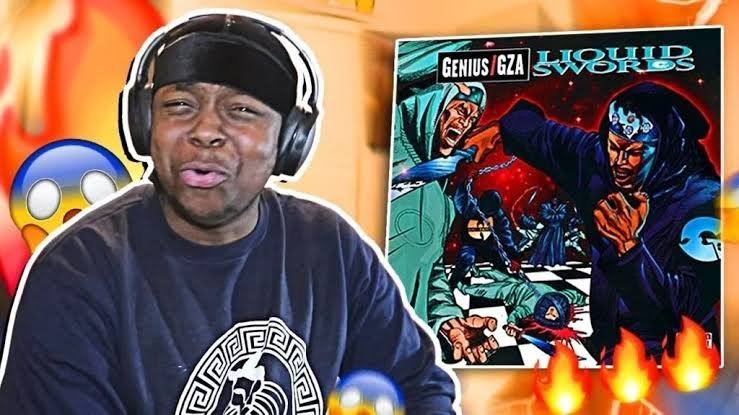In 1999, GZA (aka The Genius) dropped his iconic album Beneath the Surface, following the massive success of Liquid Swords. Known for his deep lyrical abilities and thought-provoking rhymes, GZA continued to make a lasting impact in the hip-hop world. While Beneath the Surface may not have achieved the same legendary status as Liquid Swords, it remains an essential listen for any fan of ’90s hip-hop.
In this blog post, we’ll take a look at BoomBapReviews’ take on GZA’s 1999 release, exploring its impact, style, and why it deserves more attention. Whether you’re a long-time Wu-Tang Clan fan or just diving into the golden era of hip-hop, this review will give you insights into what makes this album special.
Introduction to BoomBapReviews: The Place for Real Hip-Hop Lovers
BoomBapReviews is a platform dedicated to preserving the essence of classic hip-hop, especially the boom-bap sound that dominated the ’90s. Their in-depth reviews cover albums that shaped the genre, offering critical insight, historical context, and a bit of nostalgia for true hip-hop heads.
In their review of Beneath the Surface, BoomBapReviews praises GZA for staying true to his roots. Let’s break down their thoughts on this 1999 release, the highlights, and the overall reception of this classic.
The Sound of Beneath the Surface: Staying True to Boom-Bap
BoomBapReviews gives a detailed breakdown of the album’s production, noting how Beneath the Surface features the gritty, raw sound that made Wu-Tang Clan famous. Tracks like “Amplified Sample” and the title track “Beneath the Surface” showcase the signature boom-bap beats, characterized by hard-hitting drums, soulful samples, and minimalistic yet powerful instrumentation.
The review points out how GZA’s ability to stay true to this style is both a strength and a limitation. While it satisfies hardcore fans, some critics felt the album didn’t push boundaries compared to more experimental releases from other members of Wu-Tang during this time.
GZA’s Lyrical Genius: A Deep Dive
As BoomBapReviews highlights, one of the strongest aspects of Beneath the Surface is GZA’s intricate lyricism. Known as one of the most intellectual rappers in the game, GZA uses complex metaphors, wordplay, and vivid imagery to paint his stories. Tracks like “Crash Your Crew” and “Breaker, Breaker” are prime examples of GZA’s ability to mix street wisdom with philosophical musings.
In their review, BoomBapReviews calls GZA’s lyricism “timeless” and suggests that Beneath the Surface deserves a spot alongside Liquid Swords when discussing the best lyrical albums of all time. Though the production may not have the same impact as his previous work, the lyrics alone make this album a standout.
Features and Collaborations: A Wu-Tang Family Affair
One of the most exciting parts of any Wu-Tang Clan member’s solo work is seeing which other members will make guest appearances. BoomBapReviews notes that Beneath the Surface doesn’t disappoint in this regard, featuring standout verses from Inspectah Deck, Killah Priest, and other Wu-affiliates. Each collaboration feels like a natural extension of the album’s themes, with every guest contributing to the overall storytelling.
BoomBapReviews commends the synergy between GZA and his collaborators, saying that while the features don’t overshadow the main artist, they do add variety and energy to the album. Songs like “1112” with Masta Killa and “High Price, Small Reward” with Killah Priest are excellent examples of this balance.
Critical Reception: Why Beneath the Surface is Underrated
While Beneath the Surface received positive reviews from critics upon release, it didn’t gain the same level of acclaim as Liquid Swords. BoomBapReviews argues that this may be because of the high expectations set by his previous album. Fans and critics alike expected GZA to reinvent himself, but instead, he chose to refine his existing style.
According to BoomBapReviews, this decision has led to Beneath the Surface being somewhat overlooked in discussions of GZA’s best work. However, they argue that the album has aged well, and in retrospect, it offers a more mature, introspective side of GZA that wasn’t fully appreciated at the time.
Conclusion: Why You Should Revisit Beneath the Surface
BoomBapReviews’ take on Beneath the Surface is clear: this album deserves a second look. While it may not have achieved the same immediate cultural impact as Liquid Swords, it’s a powerful, introspective work that showcases GZA’s lyrical genius and commitment to the boom-bap sound. For fans of ’90s hip-hop, it’s a must-listen, and for those new to GZA’s work, it’s a great starting point.
If you’re a lover of lyrical depth, intricate production, and the classic Wu-Tang vibe, give Beneath the Surface a spin. As BoomBapReviews suggests, it’s an underrated gem in GZA’s discography that’s worth rediscovering.
FAQs
1. What is BoomBapReviews?
BoomBapReviews is a platform dedicated to reviewing classic boom-bap hip-hop albums, focusing on ’90s releases and providing deep dives into their impact, sound, and cultural relevance.
2. Why is Beneath the Surface considered underrated?
Beneath the Surface followed GZA’s critically acclaimed Liquid Swords, and while it was well-received, it didn’t match the expectations of fans and critics at the time. Over time, many have come to see it as a mature, introspective work that was ahead of its time.
3. What makes GZA’s lyrical style unique?
GZA is known for his intellectual lyricism, using complex metaphors, wordplay, and vivid imagery to tell stories. His deep, philosophical approach sets him apart from many other rappers.
4. How does Beneath the Surface compare to Liquid Swords?
While Liquid Swords is more aggressive and raw, Beneath the Surface is more introspective, showcasing a calmer, more reflective GZA. Both albums feature top-tier lyricism, but the overall tone is different.
5. Who are some of the notable guest features on Beneath the Surface?
The album features appearances from Inspectah Deck, Killah Priest, Masta Killa, and other Wu-Tang affiliates, adding a fresh dynamic to GZA’s intricate storytelling.

